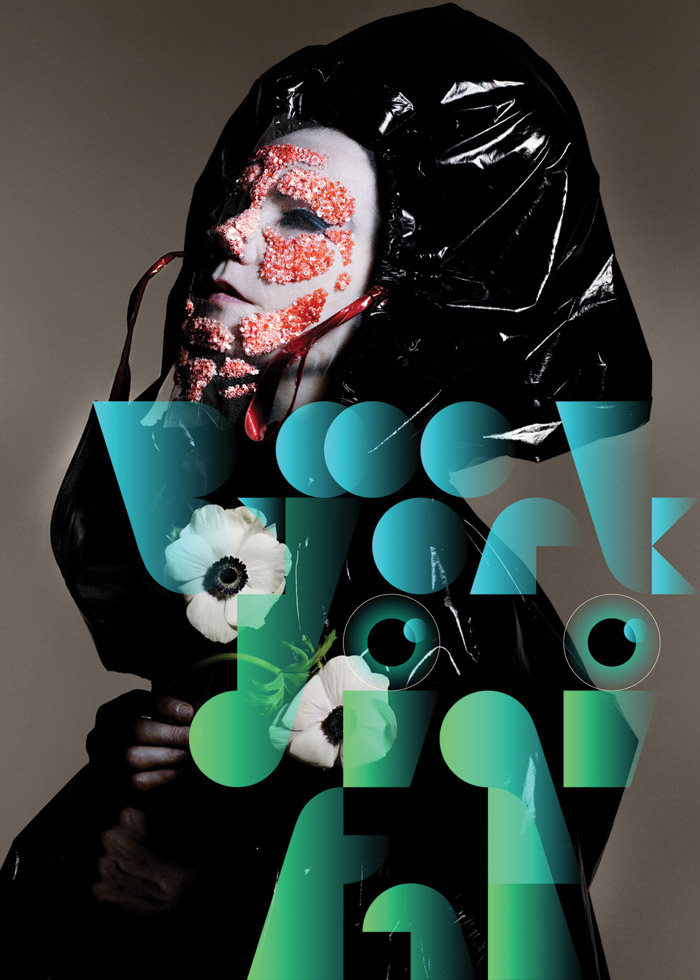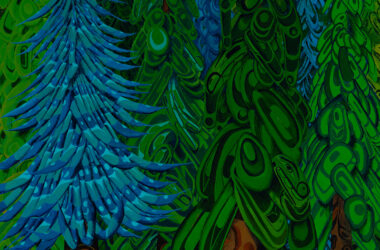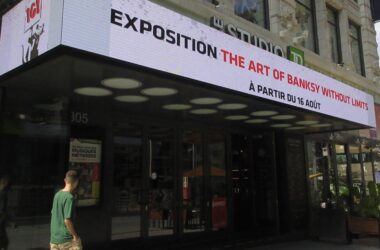Drifting off to sleep after attending Björk Digital, I found myself in an ontological panic. I was falling into a strange half-dream-state that had me questioning the true nature of reality.
Montrealers have one week left to enter the mouth of Björk, the iconic Icelandic singer. After the Björk Digital exhibit at Centre Phi Gallery closes, museum-goers will no longer have the privilege of staring into her epiglottis as her voice lifts them into a space beyond reality. The Björk Digital virtual reality (VR) experience is, as one would imagine, a surreal trip. It is moving, disturbing, bizarre, and enlightening. It is undoubtedly the future of experiential media.
After making stops in London, New York, Sydney, and Tokyo, the multimedia exhibit has come to Montreal as part of this year’s Red Bull Music Academy, a travelling culture festival featuring music, talks, and installations. Throughout her career, Björk has consistently pushed boundaries—and not only with her music. Her artistic persona explores our primal instincts and our role in the natural world. In crafting content for VR, she has created art that challenges our perceptions and extends our sensory experience to new landscapes.
For many exhibit attendees, this will be the first time putting on a virtual reality (VR) headset. The exhibit consists of five VR music videos from her most recent album, Vulnicura. A second gallery displays Björk’s new Biophilia app and a reel of her latest videos.
From the outset, viewers might be skeptical about the emotional impact of a VR music video. The first video for “Black Lake” confirms these suspicions: It’s gimmicky and doesn’t take full advantage of VR as an interactive medium. Thankfully, the exhibit gets progressively better. A highlight is the somewhat claustrophobic experience of being inside Björk’s mouth as she sings “Mouth Mantra.” The video for “Quicksand” is mesmerizing, involving animated grains of sand that dance around the viewer’s head, forming abstract images.
The final video for “Family” is the most exciting use of the technology. The viewer is standing upright with the VR headset, holding two controllers that allow for interaction with a virtual environment. With the headset on, viewers see the movement of their own hands and arms, allowing them to reach out and touch their environment. An animated version of Björk sings and takes viewers flying through a sea of animated vulvae. The experience feels oddly emotional, as one experiences a degree of intimacy with the artist that would not be possible in any other medium. The fourth wall is broken, and the barrier between technology and reality is blurred.
Despite this success, there is no doubt that the technology is still primitive. VR is a young yet rapidly expanding industry, with the market expected to grow to $120 billion USD by 2020. At times, this exhibit feels like a prototype experiment in an emerging media platform. The display is pixelated and the clunky Samsung Galaxy headset risks causing neck pain after an hour. The medium is clearly still in its early stages, but when the technology advances, the possibilities for storytelling are endless. But, despite the technological downfalls, the exhibit is still undoubtedly worth attending. This is an exciting opportunity to partake in the emergence of a platform that is sure to become hugely popular in a number of years.
As our media landscape shifts into uncharted territory, this multimedia exhibition is an example of how interactive technology can revolutionize our perception of the world around us, causing us to question the nature of reality.
Björk Digital is an ongoing exhibition at the DHC/ART Foundation for Contemporary Art at 451 Rue Saint-Jean in Old Montreal. It will end on November 12th. Book your appointment at http://dhc-art.org/









